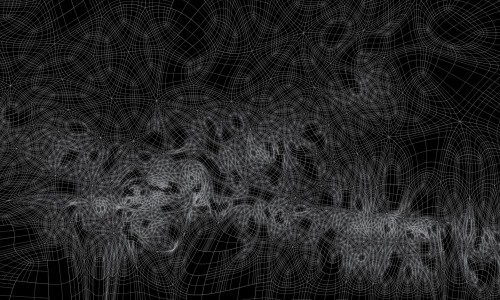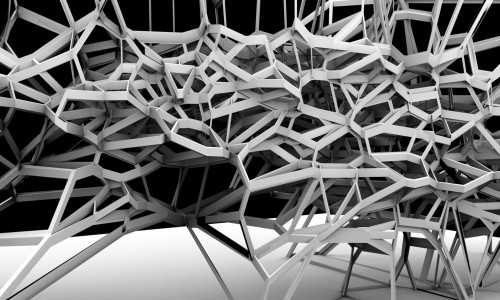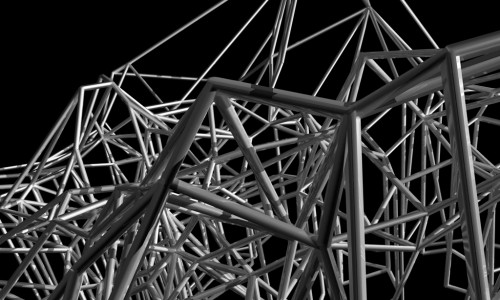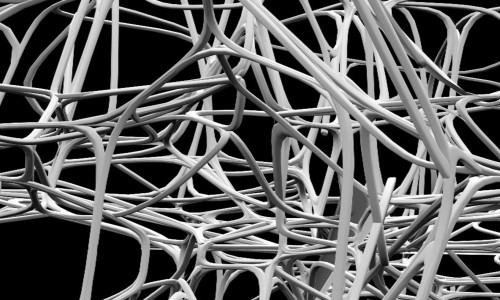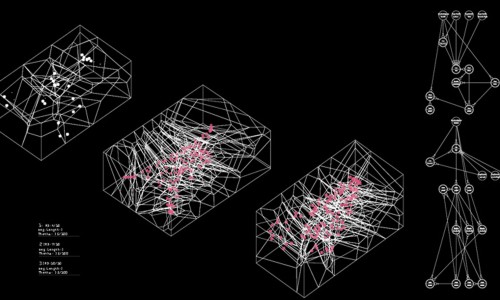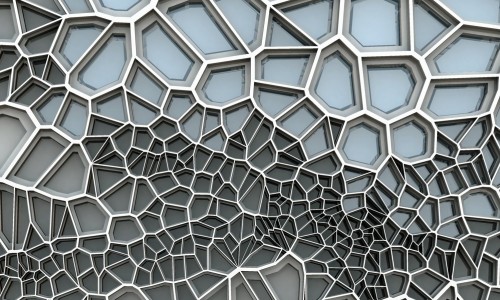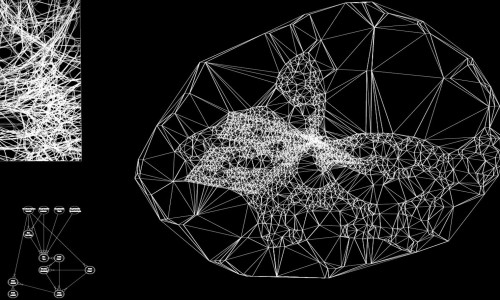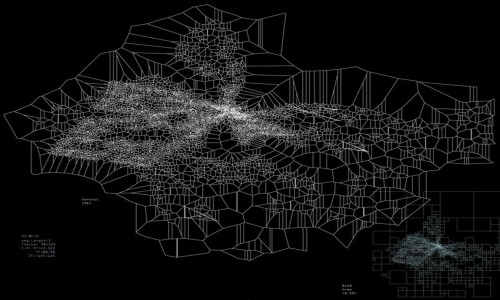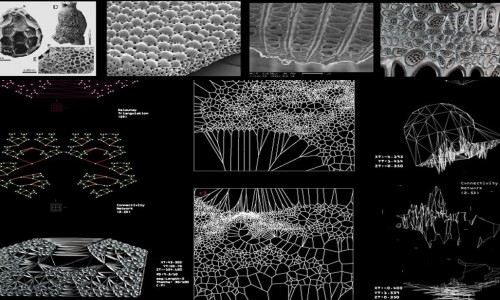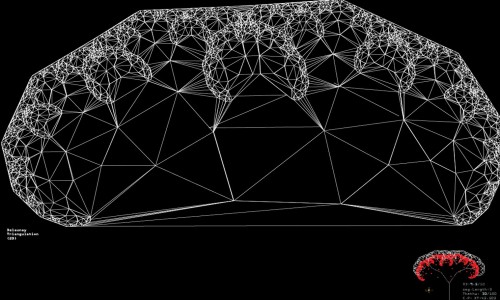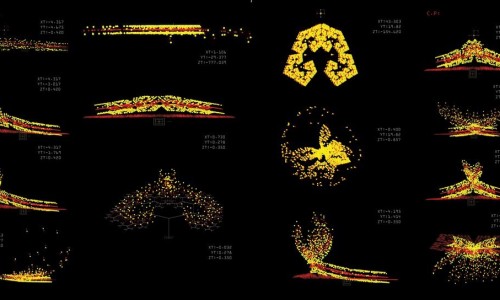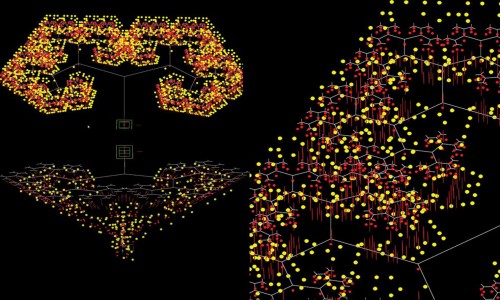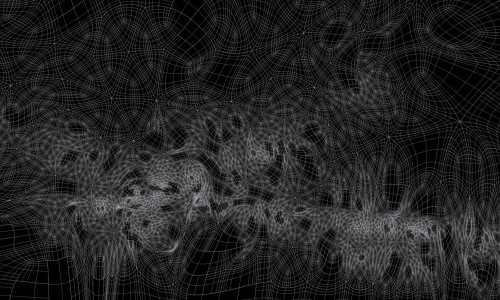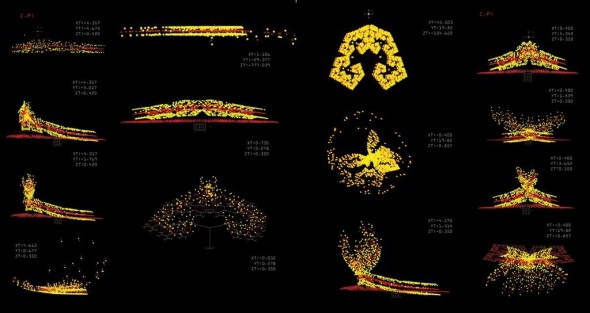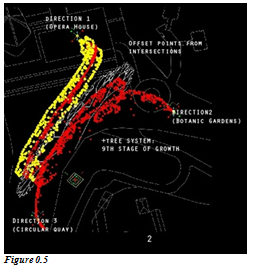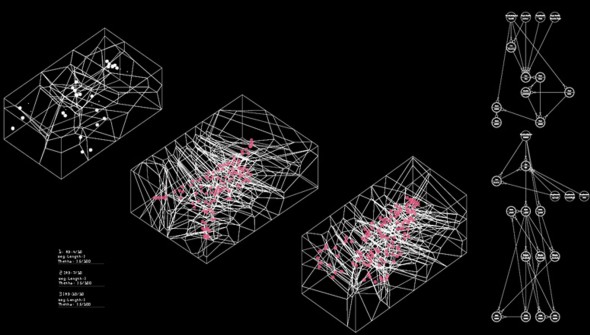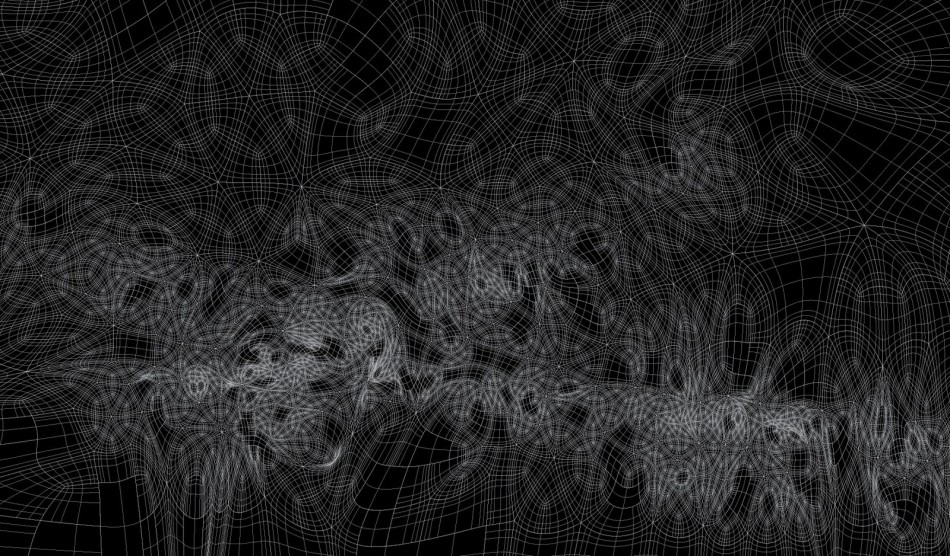Diana Saul Studio Architecture + Design + Fabrication
Parametric Studies For A Responsive Surface
UTS University of Technology Sydney, AU, Master of Digital Architecture.
1.1 Morphogenesis and Epigenesis in Bilogical Systems
“The fashionable ideology of ultra-Darwinism, which reduces organisms to little more than machines for the replication of DNA, is gradually being replaced by a more holistic trajectory in which life is considered to depend upon complex interactions that occur within cells, organisms, and with their micro-and macro-environment through time and space”.
Jenny E. Sabin, Peter Lloyd Jones (Acadia 2008)
In the Darwinist theory of natural selection, Morphogenetic changes in an organism come from the evolution of favorable phenotypes which are the ones that prevail as a result of their successful adaptation through generations. (this is a long-term process where generally strength is what prevails to develop the proper skills to survive). In Epigenesis (Change in gene expression) there are two different aspects related to Morphogenetic changes; in the traditional point of view it refers to something that is considered being formed or organized from the beginning, here, and morphological changes occur according to established genetic information. More recently, it has been theorized that organization and form evolve over time through exchanges and conditionings, and although DNA structure itself is not changed, environmental factors affect the behavior of the genes which “behave (or express themselves) differently”.
1.1 Morphogenesis and Epigegesis in a computational enviroment
By focusing on the processes of interaction between cells and external factors rather than on the pure gene, a different perspective on the construction and dynamics of Morphogenetic architecture is beginning to emerge. The system that I developed in Parametric studies for the design of a responsive surface system (figure 01) integrates a growth algorithm which in this case corresponds to the Tree System with different variables such as increment, segment length, angle, and the application of external forces which themselves are the parametric relations between component distances, control points, tree root systems and their directions. Differentiation is achieved through manipulation of control point sublocations, reflecting enviromental factors as well as change over generations (time variable).
Digital form-finding processes were used to investigate possible structures and their spatial distributions. For instance Voronoi diagrams help to understand relations between components in their eighth stage of growth, as well as gradual morphological changes, e.g. from figure 0.2 to 0.4, geometrical symmetry has been broken. Differentiation is achieved through variations in the distance between intersections (points) and applied forces.
Once the parametric settings are established, the system is placed on site (figure 05), and the system interacts with the environment by responsiveness to the local pedestrian tensions. In order to reach the equilibruium shown, three different force fields were introduced based on the independent forces and directions. As a result, a Control point acts in a flexible manner towards pedestrian tensions generating a particular morphology as shown in figure 0.5. Variations in density were achieved through changes in the recursion depth variable of the Tree System.
Part of the system performance consists of adaptation according to the density the program requires; for instance as seen in figure 0.6, the pavilion does not require a complex structure and thus the 7th and 10th stages of growth were discarded. Then according to the same program, the fourth stage of growth was selected as a base for an appropriate structure.
As well as examining the growth algorithm in order to represent architecture as an organism, the system included physical processes as driving factors in the generation of form, which then led to differentiation. In the context of “Morphogenesis”, the form did not emerge from the pure code (the genetic algorithm – tree system) but obeyed external forces that interacted with it, taken as environmental factors.
The application of morphogenetic processes and performance Materials in Architecture can mean complexity of the building system as a result of the multi-faceted relations between specialized building elements. These elements will perform as efficiently as possible according to their specific role, thus leading to the generation of a variety of shapes and forms. In this sense, Morphogenesis in architecture occurs when elements of the system (structures, enclosures, facades) act in a flexible manner presenting considerable changes over time according to physical inputs.
The reason why this is relevant in Architecture is due to the interaction of all components: Morphogenetic parametric systems, the application of external forces, the specialization of local elements, along with digital fabrication techniques corresponding to a high degree of complexity in architectural form generation and fabrication as well as high performance of the system as a whole.
